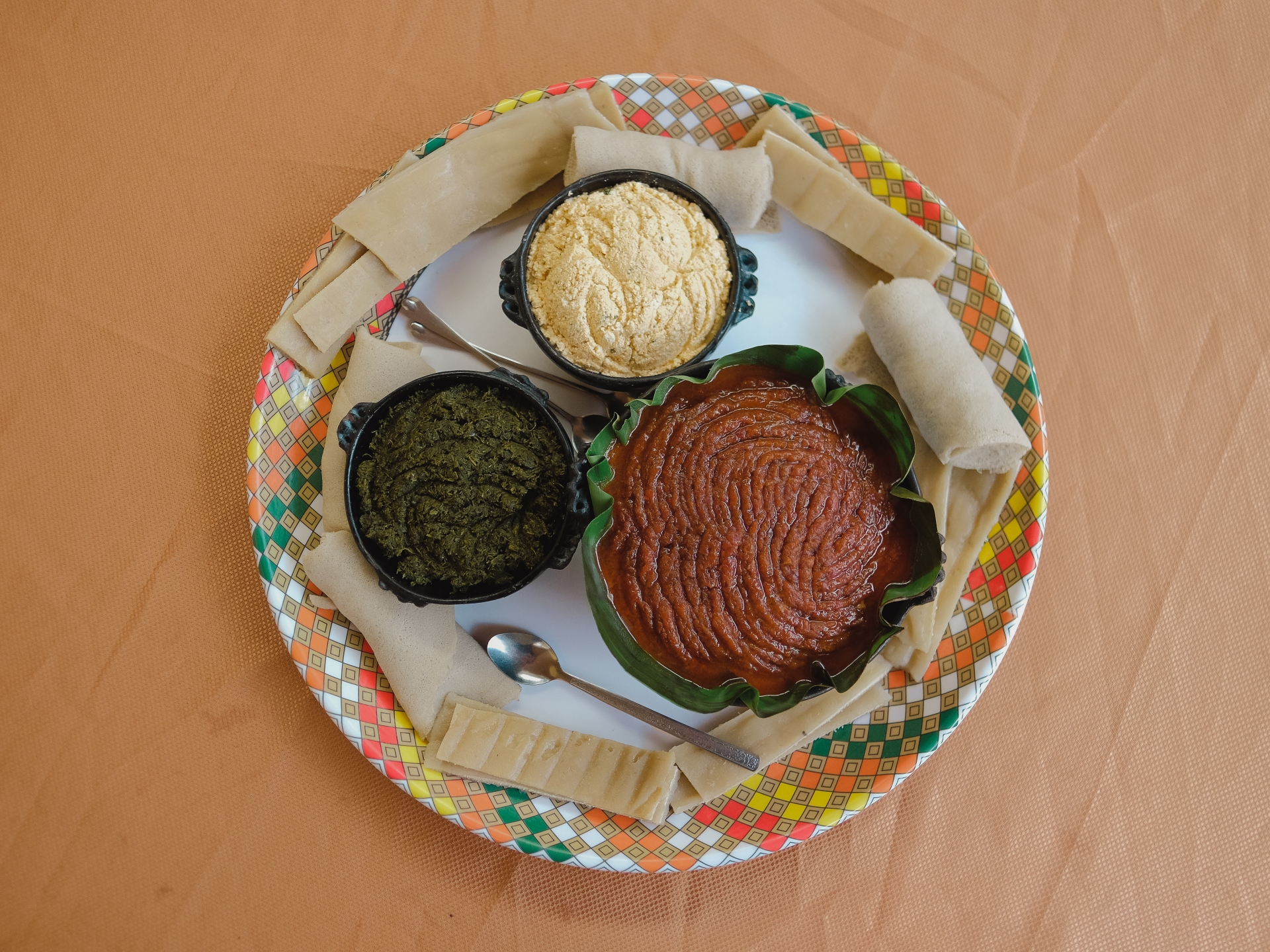With additional reporting by Rebecca Tewodros in Addis Ababa
“If I don’t eat injera at least once a day, I don’t feel like I’ve eaten,” Ethiopians say about their love for their staple food.
Injera, that large, soft tangy flatbread that is almost literally the foundation of Ethiopia’s vast cuisine, the surface on which heaps of delicious stews, curries and meats are arranged and the vessel diners use to scoop food up. It is not a dish, it is an identity marker for Ethiopians.
Injera features in the foods eaten every day, including feast days and holidays; cherished guests are served these dishes at home or taken out to eat them in a restaurant. One of the most famous of these dishes is kitfo.
Originating in the central Gurage region, about an hour and a half southwest of Addis Ababa, kitfo is finely chopped – or minced – beef that is massaged with niter kibbeh, a clarified butter infused with herbs and spices, and marinated in mitmita, a chilli powder-based spice blend.
In a country obsessed with raw meat, this dish was a sure hit once it left its small home state.
Kitfo has established itself in the hearts of many Ethiopians who eat it on special and not-so-special occasions at home or out in a favourite spot. A spot like Addis Ababa’s Bekelech Kitfo, founded, owned and run for more than 50 years by the undisputed champion of kitfo, the indomitable octogenarian Bekelech Bere-Wak.
Sadly, I was never one of them.
